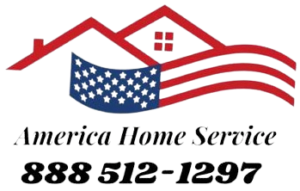# Chimney Maintenance, Repair, and Cleaning: Essential Tips for Fireplace Safety
Maintaining a safe and efficient fireplace is crucial for any homeowner. Regular **chimney maintenance**, **chimney repair**, and **chimney inspection** are vital to ensure your fireplace operates safely and efficiently. This article will guide you through the essential aspects of chimney care, including **creosote removal** and **fireplace safety**.
## The Importance of Chimney Maintenance
Chimney maintenance is a critical aspect of home safety and efficiency. A well-maintained chimney ensures that smoke and harmful gases are properly vented out of your home, reducing the risk of carbon monoxide poisoning and chimney fires. Regular maintenance also helps in identifying potential issues early, saving you from costly repairs in the future.
## Key Aspects of chimney inspection
Regular chimney inspections are essential to identify any structural issues or blockages. A professional chimney inspection typically involves checking the chimney’s interior and exterior for cracks, leaks, or blockages. It also includes assessing the condition of the chimney cap and crown, which are crucial for preventing water damage and animal intrusion.
## Understanding chimney repair
chimney repair is necessary when inspections reveal damage or wear. Common repairs include fixing cracks in the chimney liner, replacing damaged bricks, and repairing the chimney crown. Timely repairs are crucial to prevent further damage and ensure the chimney’s structural integrity. For more information on our chimney repair services, visit our service page.
## The Process of Creosote Removal
Creosote is a highly flammable substance that accumulates in the chimney over time. Regular creosote removal is essential to prevent chimney fires. Professional chimney sweeps use specialized tools to remove creosote buildup, ensuring your chimney is safe for use. It’s recommended to have your chimney cleaned at least once a year, especially if you use your fireplace frequently.
## Fireplace Safety Tips
Ensuring fireplace safety involves more than just maintaining the chimney. Here are some tips to keep your fireplace safe:
- Always use a fireplace screen to prevent sparks from escaping.
- Keep flammable materials away from the fireplace.
- Ensure the damper is open before lighting a fire.
- Install smoke and carbon monoxide detectors in your home.
## Related Services
In addition to chimney services, we offer air duct cleaning and dryer vent cleaning to improve your home’s air quality and safety.
## FAQ Section
### What is the best time for chimney maintenance?
The best time for chimney maintenance is during the spring or summer months when the fireplace is not in use. This allows ample time for any necessary repairs before the colder months.
### How often should I have my chimney inspected?
It’s recommended to have your chimney inspected at least once a year, especially if you use your fireplace regularly. Regular inspections help identify potential issues early.
### What are the signs that my chimney needs repair?
Signs that your chimney may need repair include visible cracks, water leaks, a damaged chimney cap, or a leaning chimney structure. If you notice any of these signs, contact a professional for an inspection.
### How can I prevent creosote buildup?
To prevent creosote buildup, use seasoned wood, ensure proper airflow in the fireplace, and have your chimney cleaned regularly by a professional.
## Conclusion
Regular chimney maintenance, repair, and cleaning are essential for ensuring fireplace safety and efficiency. By following the tips outlined in this article, you can enjoy a safe and warm home environment. For professional assistance, explore our comprehensive range of services, including chimney repair and inspection. Remember, a well-maintained chimney is key to a safe and cozy home.






